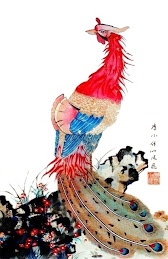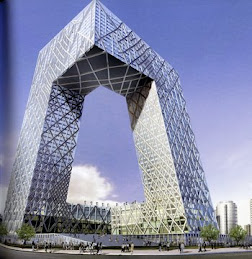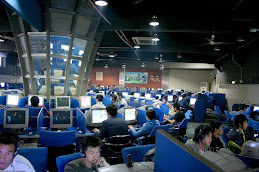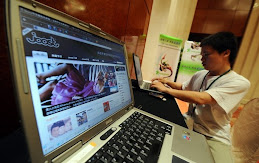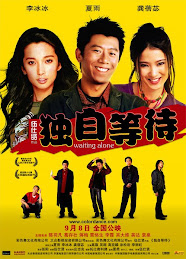Group
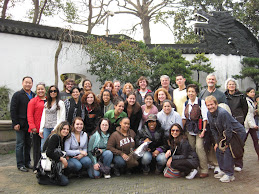
At the Gardens
Beijing
Summer Palace Stand-Up
Forbidden City
Prof. Larry Tung
Great Wall of China
It's Amazing!
Tea Ceremony
Forbidden City
Home of China's emperors
New Hats
Great Wall of China
Panda
Beijing Zoo
Shanghai at Night
The Pearl
Zhejiang University

Media & Film students with Chinese students
The Bund
Shanghai's European Influence
Zhejiang TV Station
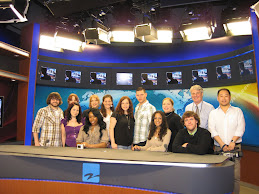
Media & Film group
Olympic Village
Beijing
Panda Hat
Caryn Golonka
Media & Film

Zhejiang University of Media and Communications
Terra Cotta Warriors Xi'an
Qin dynasty
Terra Cotta Warriors
Xi'an
Studio Zhejiang University
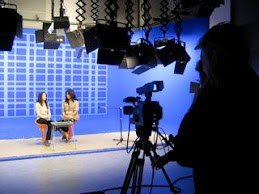
Students on set
Birdsnest Olympic Village Beijing
Kevin Lutz stand-up
Zhejiang University
Media & Film faculty with University Officials
Monday, February 16, 2009
Monday, February 9, 2009
MED 4800:T1 Media & CHINA
MED 4800:T1
Travel Learn: Media & China
Spring 2009
Dr. Cathleen Londino
Chair, Media & Film
CAS 418, Ext. 70454
www.clondinochina.blogspot.com
***Students taking this class must have signed up and paid for the Travel Learn trip to
China, March 12-23, 2009
MED 4800: T1 Travel Learn: Media and China (3) credits Dr. Cathleen Londino
The class will present an overview of media (particularly radio and television) in Chinese culture, which will prepare students for sampling and appreciating Chinese media while on tour in March. The focus of the course is the tour experience so assignments and meetings are designed to support the actual travel adventure. This course can substitute for MED 3610 International Comparative Media
Meeting dates as follows:
TRIP: Thursday, March 12-23, 2009 CHINA
In addition to the actual trip, all Travel Learn classes in MEDIA or FILM meet the following dates in CAS 440 at 4:30.
Please check with Dr. Londino or the blogspot in case of room or meeting change.
Pre-Trip: Wednesday, January 28, 2009
Wednesday, February 18, 2009
Wednesday, March 4, 2009
Post Trip: Wednesday, April 15, 2009
Wednesday, May 6, 2009 Student Showcase
Assignments:
I. Pre-Trip Preparation:
- Write a one-page human-interest news story on your anticipated trip to China. It should include what you know about those places and how the media has shaped your expectation. What are you expecting to do on the trip, visit museums, tourist attractions, history, cultural activities, shop, eat, etc.? The story should capture your pre-trip excitement and what you hope to get out of the experience.
- Film:
Watch a popular film of your choice that is set in China (or significantly about the area) and think about the coming trip. Did the film affect or influence your activities or attitude toward China? Watch it again after you return from the trip. Did your actual experience alter your experience of the film? Write a comparison of the film experience before and after the trip.
- Media Research: Some source suggestions: Google Scholar (from home page go to More and drop down menu lists “Scholar”) You can also use other popular search engines and Wikipedia for an overview.
Briefly answer the following:
- Describe the Chinese Television systems (technical standards (U.S. is NTSC, France is SECAM, China is....)
- Describe the types of programming.
- Describe the means of programming support (advertising, government supported, pay services, etc.)
- Regulation… who controls it?
- News: Compare Broadcast News in China to the U.S. and identify the major international broadcast news agency
- What are the major newspapers?
- What are the most popular magazines?
II. On-Tour Assignment: Based on your pre-trip research…
- Watch a sample of Chinese Television and make an observation about the programming/advertising, etc. In what way is it similar/different than U.S.?
- Watch a sample of an international service such as CNN or BBC International and comment on the coverage.
- Obtain a copy of one of the major newspapers and compare it to the Star-Ledger or NY Times (at least in style if you cannot find an English version).
- Obtain a copy of a magazine and compare it to a similar one in the U.S.
- Obtain a copy of U.S.A. Today European version. Compare it to a U.S. copy.
- How did your experience of the Chinese culture differ from your expectation? Report your findings or observations from the above in a blog, podcast or photostory so that it can be shared with others or your family.
III. Post Trip Assignment: Do one of the following, using the information or media gathered on the trip:
- Write an article (with photos) based on your experience with media & culture.
- Create a Travel Learn promo based on your experience with the China trip.
- Create a digital story based on your experience.
EVALUATION: Course grade is based on the successful participation in the Travel Learn experience. Students are required to participate in ALL included activities as part of the normal itinerary. In addition, students are expected to be on time and their general behavior is expected to reflect favorably on the program, the university and the United States abroad. This Travel Learn trip is an educational experience, not a vacation.
Overview of Media in China
Media of the People's Republic of China*
*From Wikipedia, the free encyclopedia
This is provided as summary information on media issues and China.
These are excerpted from the full article at Wikipedia and you are encouraged to simply use this as an overview and follow up with other sources or links.
History
See also: Media history of China
Within the People's Republic of China (PRC), there is heavy government involvement in the media, with many of the largest media organizations (namely CCTV, thePeople's Daily, and Xinhua) being agencies of the government of the PRC. There are certain taboos and red lines within the media in mainland China, such as questioning the legitimacy of the Communist Party of China, the governance of Tibet and issues surrounding Falun Gong. Yet within those restrictions, there is a vibrancy and diversity of the media and fairly open discussion of social issues and policy options within the parameters set by the Party.
Much of the surprising diversity in the media in mainland China is attributable to the fact that most state media outlets no longer receive large government subsidies and are expected to largely pay for themselves through commercial advertising.[1] As a result, they can no longer serve solely as mouthpieces for the government but must also produce programming that people find attractive and interesting so that money can be generated through advertising revenue. In addition, while the government does issue directives defining what can and cannot be published, it does not prevent, and in fact actively encourages state media outlets to compete with each other for viewers and commercial advertising. It is important to note, however, that the government and individual media outlets can also use financial incentives to control journalists' behavior.[2]
Television
Today there are approximately 700 conventional television stations—plus about 3,000 cable channels—and 1,000 radio stations.
Television broadcasting is controlled by China Central Television (CCTV), which, with its 16 program channels, is the country's only national network. CCTV, which employs about 10,000 people and has an annual income of ¥1,120mln yuan (2004,=$138mln), falls under the dual supervision of the Propaganda Department, responsible ultimately for media content, and the State Administration of Radio, Film, and Television, which oversees operations. A Vice Minister in the latter ministry serves as chairman of CCTV. The network's principal directors and other officers are appointed by the State. So are the top officials at local conventional television stations in mainland China—nearly all of which are restricted to broadcasting within their own province or municipality—that receive CCTV broadcasts.
CCTV produces its own news broadcasts three times a day and is the country's most powerful and prolific television program producer. It also has a monopoly on purchases of programming from overseas. All local stations are required to carry CCTV's 7 p.m. main news broadcast; an internal CCTV survey indicates that nearly 500 million people countrywide regularly watch this program.
Even if CCTV is the most powerful network of mainland China, it has only about 30% of audience share all over the national territory. The fact shows how the Chinese viewers are biased in favour of local tv programs, that are more likely to represent the differences of an audience that is the largest in the world, more than the national or even international programs, that can hardly attend the needs of such a wide public.
Since September 1, 2006, the Chinese government has banned foreign-produced animation between the hours of 5:00 to 8:00 P.M. on state-run television to protect struggling Chinese animation studios that have been affected by the popularity of such cartoons.[3]
Newspapers and Journals
The number of newspapers in mainland China has increased from 42—virtually all Communist Party papers—in 1968 to 382 in 1980 and more than 2,200 today. By one official estimate, there are now more than 7,000 magazines and journals in the country. The number of copies of daily and weekly newspapers and magazines in circulation grew fourfold between the mid-1960s and the mid-to-late 1980s, reaching 310 million by 1987. (2)
The media and communications industry in mainland China is administered by various government agencies and regulators.
Regulators:
State Administration of Radio, Film, and Television - administers and overseer the administration of state-owned enterprises involved in the radio, television and broadcasting industry.
Ministry of Industry and Information Technology - administers the physical communications infrastructure and the Internet service providers.
General Administration of Press and Publication - administers the newspaper, periodical, video and audio media and news industry.
Ministry of Public Security's Cyber Police force - agency for regulating online content and investigation of Internet fraud, scams and porn.
Media Reform
A prime example of the liberalization has been the party's flagship newspaper, People's Daily, which had been rigidly controlled under Mao, used against his enemies, and copied verbatim by every other newspaper in the country during the Cultural Revolution. This leading daily was reformed and enlivened in the late 1970s and early-to-middle 1980s by then editor-in-chief Hu Jiwei. Hu expanded the paper's size and coverage, encouraged public criticism through letters to the editor, called for promulgation of a press law to spell out journalists' rights, and introduced a sprightlier writing style.
Nevertheless, the Committee to Protect Journalists (CPJ) reported that China "continues to be the world's leading jailer of journalists," with 42 imprisoned journalists at the end of 2004, and accuses private companies, both foreign and domestic, of having been complacent toward or complicit with government censorship.[4] Also, in theirWorldwide Press Freedom Index 2007 , Reporters Without Borders ranked China 163rd (or 7th from bottom) in terms of press freedom.[5]
In preparation of the 17th National Party Congress in 2007, new restrictions were placed on all sectors of the press, Internet-users, bloggers, website managers, foreign journalist, more than 30 of which have been arrested since the start of the year. In addition, a thousand discussion forums and websites have been shut down, and "a score of dissidents" have been imprisoned since July 2007.[6]
Diversified content
The media's growing autonomy has been reflected in their increasingly diversified content. Since the late 1970s, despite periodic reversals, media in mainland China have frequently criticized party cadres and have published debates on such fundamental issues as the rule of law, freedom of the press, and universal human rights. They also have reported on a myriad of previously untouched social and lifestyle subjects. The only inviolable restrictions appear to be an unwritten ban on challenges to the party's right to rule and to the legitimacy and decision-making authority of top party leaders.
Talk radio
Talk radio in mainland China allows a much freer exchange of views than other media formats. In effect, talk radio has shifted the paradigm from authorities addressing the people to people addressing the authorities. For example, until 1991 the 14 million inhabitants of Shanghai were served by only one radio station—Radio Shanghai—which primarily aired predictable, pro-government propaganda. Today, there are over 100 talk radio stations throughout the Shanghai area.[citation needed]
Magazines and journals
Magazines and journals published in mainland China also have become much less inhibited in their coverage. These publications appear to enjoy more freedom than newspapers, which in turn have more leeway than radio (other than talk radio) and television. Magazines now print internal police reports on jailings of religious leaders and other dissidents.
Improvements in personnel
The media also have attracted and are retaining more competent people than before. Journalism is widely seen as a more promising career field than in the past, while government work has lost much of its allure as other opportunities open up. At the same time, the explosion of business and entrepreneurial opportunities in recent years has complicated efforts by both the media and the government to attract good people. Journalism and government both face stiff competition from the relatively high salaries and profits available in the business sector. But the rising popularity and profitability of metropolitan evening newspapers offer the prospect that higher quality, better paid jobs in journalism will expand in the years ahead.
New technologies
Technical advances in the field of communications are undercutting the PRC Government efforts to control media content and are likely to play an even-greater role in the future.
Cable television
Residents of the Chinese mainland now receive more than 20 outside television channels by satellite, including Chinese-language services of CNN, Star TV, and the United States Information Agency. In the southern province of Guangdong, 97 percent of the households have television sets, and all—except those in a few parts of the city of Guangzhou, where reception is poor—have access to Hong Kong television through cable networks. Some local stations even intercept the signals and insert their own commercials. Beijing is unable to effectively monitor, let alone control, the illicit cable operators who have sprung up since the early 1990s. As of 1995, about 1,000 of the 3,000 cable stations in mainland China, linked to perhaps 50 million homes, were unlicensed.
Satellite dishes
Satellite dishes in mainland China that pull in programs from Hong Kong, Taiwan, and other places are regulated[citation needed], but government entities such as the Ministry of Machinery Industry and the military services produce such dishes outside allowable quotas and guidelines and then sell them illicitly to eager customers.
Internet
Main article: Internet censorship in the People's Republic of China
Widening Chinese use of the Internet is also undercutting government efforts to control the flow of information. According to CNNIC's 19th Statistical Survey Report on the Internet Development in China, more than 100 million people in mainland China now have Internet access.
Since the beginning of 1996, the State has suspended all new applications from Internet service providers seeking to commence operations in the PRC; moved to put all existing Internet services under the jurisdiction of the Ministry of Posts and Telecommunications, the Ministry of Electronics Industry, and the State Education Commission; and attempted—without much success—to establish firewalls, limit the contents of home pages, and block access to certain Internet sites through routing filters. Although much of the Internet access in China is subjugate to the so-called "Great Firewall of China", which blacklists certain websites and even blocks chat sessions, it has proven relatively ineffective.
Party resistance to media autonomy
Although the trend in mainland China clearly is toward greater media autonomy and diversity and away from government control and intimidation, crosscurrents of resistance persist. Powerful domestic institutions like the Central Propaganda Department and the State Administration of Radio, Film, and Television still constrain efforts by the media to become more autonomous and politically diverse.
Impact of Tiananmen crackdown
Journalists were actively involved in the Tiananmen Square demonstrations in the spring of 1989. About 1,000 of the 1,600 editors and staffers at People's Daily joined the demonstrations. Reporters also took part in marches and gatherings across the country from early May until early June, when the crackdown began. Journalists were among the principal targets of the suppression: hundreds of them were arrested or fired, and thousands, including more than 500 staffers at People's Daily, were forced repeatedly to write lengthy self-criticisms and to participate in much-loathed small group meetings. According to one account, more than 20 journalists were still in prisons as of mid-1996.
Beyond those arrested for their involvement in protests, the party also decided to punish—mainly by demotion or transfer—one percent of all staff members in major Beijing media offices as a warning to others. Although the Tiananmen crackdown damaged morale among mainland Chinese journalists, journalists' spirits recently have begun to rebound as a result of increasing party tolerance of (and inattention toward) diversity in the media, as well as improvements in journalists' salaries and benefits.(32)
Structure of media in mainland China
Mainland China's media network
Xinhua (the New China News Agency) and People's Daily, the two most important print media, have status as separate government ministries; their directors sit on the party's Central Committee. Just below, hierarchically, are the two national newspapers under the control of the Propaganda Department—the Guangming Daily and the English-language China Daily. These entities have the rank of vice ministries, as does the State Council-controlled Economic Daily. The National Propaganda Department appoints publishers, chief editors, and other key officials of the above-mentioned newspapers—plus a few others—while provincial and local party leaders make similar appointments for party papers in their jurisdictions.
In many ways, Xinhua is the fuel propelling mainland China's print media. Perhaps unique in the world because of its role, size, and reach, Xinhua reports directly to the party's Propaganda Department; employs more than 10,000 people—as compared to about 1,300 for the UK's Reuters, for example; has 107 bureaus worldwide both collecting information on other countries and dispensing information about mainland China; and maintains 31 bureaus in China—one for each province plus a military bureau. In as much as most of the newspapers in mainland China cannot afford to station correspondents abroad—or even in every province in mainland China—they rely on Xinhua feeds to fill their pages. People's Daily, for example, uses Xinhua material for approximately 25 percent of its stories.(b) Xinhua is a publisher as well as a news agency—it owns more than 20 newspapers and a dozen magazines, and it prints in Chinese, English, and four other languages.
